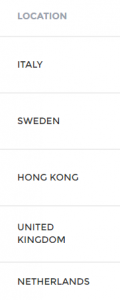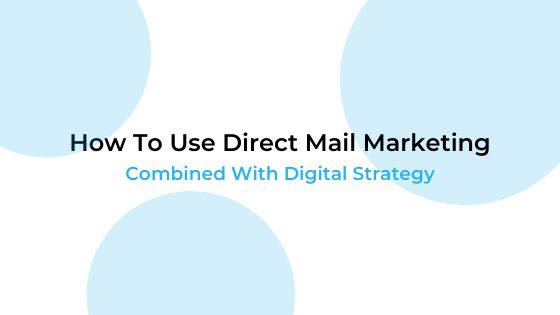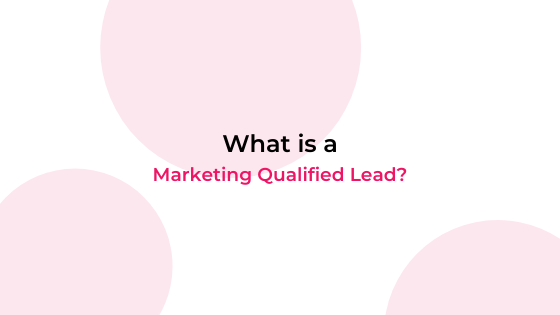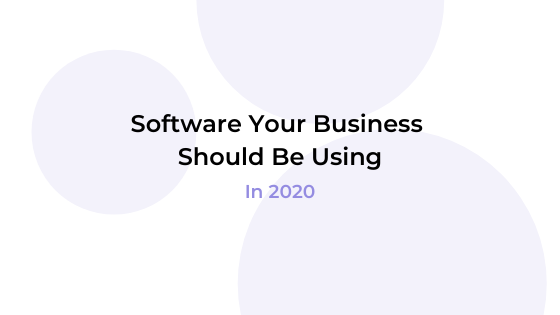Cold emailing is an unloved necessity in the world of sales, marketing and business. Pursuing new clients, leads and opportunities or contact with those who there has been no prior introduction with or knowledge of interest in your product or service.
There can be no doubting as to why cold emailing is used – It allows you to reach large numbers of potential leads, with low costs and a relatively low time expenditure. It is a simple process to prepare, create and implement, with no live people skills required (opposed to over the phone contact) and by incorporating automation, it is extremely practical.
The possibilities with cold emailing open the door to such a wide pool of opportunities and creates the chance to connect with absolutely anybody. The convenience for the receiver is also a major advantage, as they do not have to be present and available for communication immediately. They can reply in their own time and that could be at any point.
Problems With Cold Email

But like cold calling, the sending of a cold email has its own stigma attached to it. Many cold email campaigns can experience problems such as; reaching the required target. Cold emails can fail to reach the inbox of the intended recipient as they fall into the spam folder and are rarely, if ever, noticed.
They may also be out of office or have left that company. Even if an email does successfully reach a recipient’s inbox, there is still no guarantee of it being seen or opened amongst the other emails around it. Email inboxes can be cluttered places with hundreds of unseen messages. And if your email has been spotted, there is a strong likeliness that it will be ignored and deleted due to people’s busy schedules. If you are able to guide your email beyond these hurdles and get it opened, excellent.
But even then you can’t be 100% certain that your email has reached the appropriate person. It may then need to be forwarded on by the recipient to a more relevant receiver which complicates the process, further. But there are ways to give yourself a much stronger chance of jumping beyond all of the before-mentioned hurdles which occur in the email campaign process. You can avoid hitting a dead end and achieve more success and a higher response rate…
Research Your User Persona
The main reason why so many cold email campaigns fail to achieve the success hoped for, is because they are not targeted enough and lack quality research to establish the ideal customer – the user persona. For a cold email to work and get a positive response, it must serve a specific notice which relates to a certain group of people. So many one-off email campaigns do not have a message which corresponds with the audience – they are too broad and will brush the sides with everyone, but impact no one.
You would not give a pair of size seven shoes to someone with size nine feet and expect them to wear them. And just with cold emailing, you wouldn’t email somebody in one industry about something in another and expect a response. People can often send large blast-outs of their generic email and receive a handful of responses, inadvertently producing a few ‘quick wins’, which creates an illusion that one random, non-targeted email is a winning-strategy.
But it’s not sustainable or reflective and long-term it will get found out, as you continually fail to hit the required targets, swinging and missing with all of your eggs in one, limited basket. It may initially be a faster way to get your message out there, but by spending the time on researching the correct user persona of your clients, it will be far more worthwhile in the end.
Email Grid
Using an email grid can help you manage and organise your user personas and direct your cold emailing process.
Click here to download your free email grid. The spreadsheet will give you access to an email grid where you can begin to define your email targets
It matches up your user personas with your hooks (the messages you want to get across and reasons why your product or service should be of interest), to create specific messages for specific people – rather than a generic email with more chance of being neglected. You can create as many personas as you can identify, so they can be targeted with more specifically personalised emails.

User persona = Demographic + Goals/principles
You need to know as much information as you possibly can. No detail too small. Because the more you have, the more specific and personalised, you can be with your email and subject line. Therefore you are far more likely to position yourself in a light where you are seen, needed and have a more valid purpose. Establish The Demographic Job title, Industry, Size, Budget, Nationality, Location Goals And Principles So that you can apply the most customised message to their needs, It is important to know what your user personas want to achieve, and how they like to go about achieving that.
Challenges And Problems You want to find out the problems and challenges they face, so you can lean your message to offer a solution to those. Objections Then address reasons your user persona would not purchase your product – the objections. And solve them before they have the chance to say otherwise.
Use Your Current Clients Using data of your current clients (which you may have collated in a spreadsheet), you can look for patterns to establish your user personas, noticing features of the companies that are commonly using your product/service. The key is to break down the data as thoroughly as you can to identify the most precise, clear-cut and unique details so that you can send the most appropriate email possible. Sending a survey or conversing with your current clients will aid your investigation. Digging deep to find out what, why, where and when.
Using Whoisvisiting to research your User Persona
Whoisvisiting.com is a tool which identifies companies visiting your website as 95% of companies who visit your website do not enquire immediately. Though regularly used as a lead generation tool for sales, Whoisvisiting.com can provide further use for marketing teams with regards to the insights it offers.
You can use the Whoisvisiting tool for research purposes and it has something to meet almost all of the demographical needs to achieve your user personas. By seeing the companies that have previously and are currently visiting your site, the matrix and engagement of their visits can give invaluable understanding as to the businesses which you need to be targeting with your emails. There are many features on Whoisvisiting.com which will assist your research in preparation for your cold email campaign.
Company
Whoisvisiting’s primary feature is to of course identify the companies which visit your website and you will be able to clearly see that business. By clicking on to that company for further details, you will be able to see a clear description of their industry and the keywords of that company. This information allows you to establish the type of business which your website attracts and you can assign them to a category to begin your user persona identification process.
.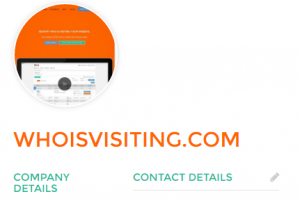
Location
The location identification, national and regional, can be used for specific purposes in your emails. You can notice a pattern of visitors from certain areas and use this when creating your targeted email list.
User Journey
A valuable feature on the Whoisvisiting dashboard is the keyword section which displays the top 5 keywords/phrases used from search engines to find your website. This can aid your knowledge of what problems or issues the user is looking to solve before stumbling across your site.
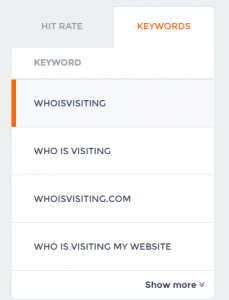
Engagement
Whoisvisiting provides the data to show the number of page views, the duration spent per page and the engagement bar collates this into one clear and visible icon. The information you can gain here will allow you to see which industries and businesses spend more time on the site and therefore show more interest.
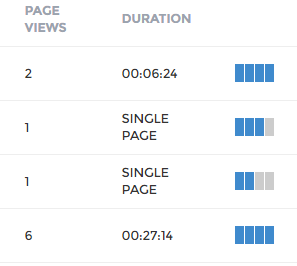
Triggers
Whoisvisiting allows you to set up triggers on certain pages to notify you when a visitor has been on there. You can then assign categories and begin to see and create user personas for people who are looking on those particular pages, ready to send specific emails relating to that section of your site.
Reports
You can download the following reports of the data from Whoisvisiting.com: Real-time notifications Custom CSV email Companies by Channel Report Companies by Search Term Report You can pull your data into one accessible sheet where you can perform further due-diligence to the data to get what you need for your user personas and email campaigns.
Identify
Whoisvisiting.com also provides an extension where you can find the email address of people from the company which has been on your site. A simple click and you will get the access you need to create the perfect list for your cold emails. You are able to narrow it down by searching for the job title which you would usually make contact with. 
All of this data can accumulate to provide the most accurate user personas for your email grid
Email Cadences
So once you have completed your research and collected the data to establish the user personas you want to target with the relevant hooks, it is on to the next step of creating your specific email cadences for those targets. It can be a guessing game as to finding out the ‘perfect’ email cadence and something which requires a large amount of trial and error, split testing and experimenting.
Subject lines, structure, timing and quantity of follow-ups are all factors which you need to consider. There is no right or wrong answer, but with your email grid on hand, you can at least be sure the message is going to be appropriate. The email cadence stage is more about persuasion and influence tactics.
Here are some examples of features and templates which are worth thinking about using in your cold emailing process:
Subject lines – The subject line is the make or break for your open rates and the key to getting your email to stand out. Without having a strategy behind it, your email is likely to fall at one of the early hurdles in the race.
Appropriate Person?
This subject line works well as it pushes the recipient to qualify for themselves if they are or not, out of curiosity. Hopefully, due to your due diligence it will be the appropriate person and this line will have succeeded in getting the email opened.
Hi, I tried to call you..
Whether it be true or not (and you can incorporate a phone call into your sequence, if you wish – here is a guide we have composed), this subject line will again trigger an intrigue as to what message it is that you are so keen to deliver.
Do you want to achieve **mention their goal**?
As previously stated, with the research you have made on these cold email targets, you should now know what it is they want to achieve and if you can put this on a plate for them, you are far more likely to get their interest.
Need to solve/increase/improve/learn/ **pain point**?
By asking if somebody is looking to solve a problem which you have pre-established, you are certain to turn heads with your accuracy of research and this subject line creates interest without giving it all away.
Did you find what you needed?
Having identified website visitors using Whoisvisiting.com, you will be able to follow-up with them via email. By applying triggers on specific pages, you can be even more specific with what exactly they have been looking at.
Message Content – Hook, Solve, Future
This is a logical structure for your emails which attempts to keep the reader’s attention line-by-line, until the end. By firstly mentioning the hook, and why your product is useful for them, you can then elaborate on how that is a solution to their needs. By then stating how this makes their lives better and that the future for them will be less problematic you have an excellent chance of getting a response.
GIF Inclusion
If you can create a GIF of something relevant to your tool, product or service, they will be able to see quickly and easily what you are looking to discuss and can establish quickly that it is something they want/need.
Follow-up –
The importance of follow-up emails can’t be stressed enough. You will rarely succeed with cold emailing at the first attempt, you need to check-in to keep reminding your targets that you are still there and ready for them in amongst their busy schedules. You certainly will be responded to asking to be removed from your mailing list at times as the follow-ups continue, but that is just standard and expected. But if you are clever with your follow-up approach and time them sensibly, it is an excellent technique.
…Understand you have been busy…
By bringing in this line to your email, you can win sympathy from your understanding of their hectic on-goings and it will stick in the back of their minds, and they will be more willing to get back to you when they have the time.
Sent from iPhone
Incorporating “sent from iPhone” at the bottom of one of your follow-up emails, implies a personal feel, that you have literally just drafted this up on the move to them specifically.

Last chance-attempt to…
On your fourth, fifth or even sixth message of your cadence, (depending how many you decide to go with) you can bring out the ultimatum. Though still not in an aggressive manner, just letting them know that you will not be in touch again and this can trigger a more urgent reaction to respond.
Automation
Using automation tools and software, you can schedule your cadences to go out all at once and never have to spend time on it again – until you receive a response. You will also be able to see statistics of your cadences and their performances in terms of open rate, response rate, and then you can qualify them for success rate. This will help you to mould the perfect cadence over time by taking elements of different approaches which have shown promise to create the ultimate sequence.

